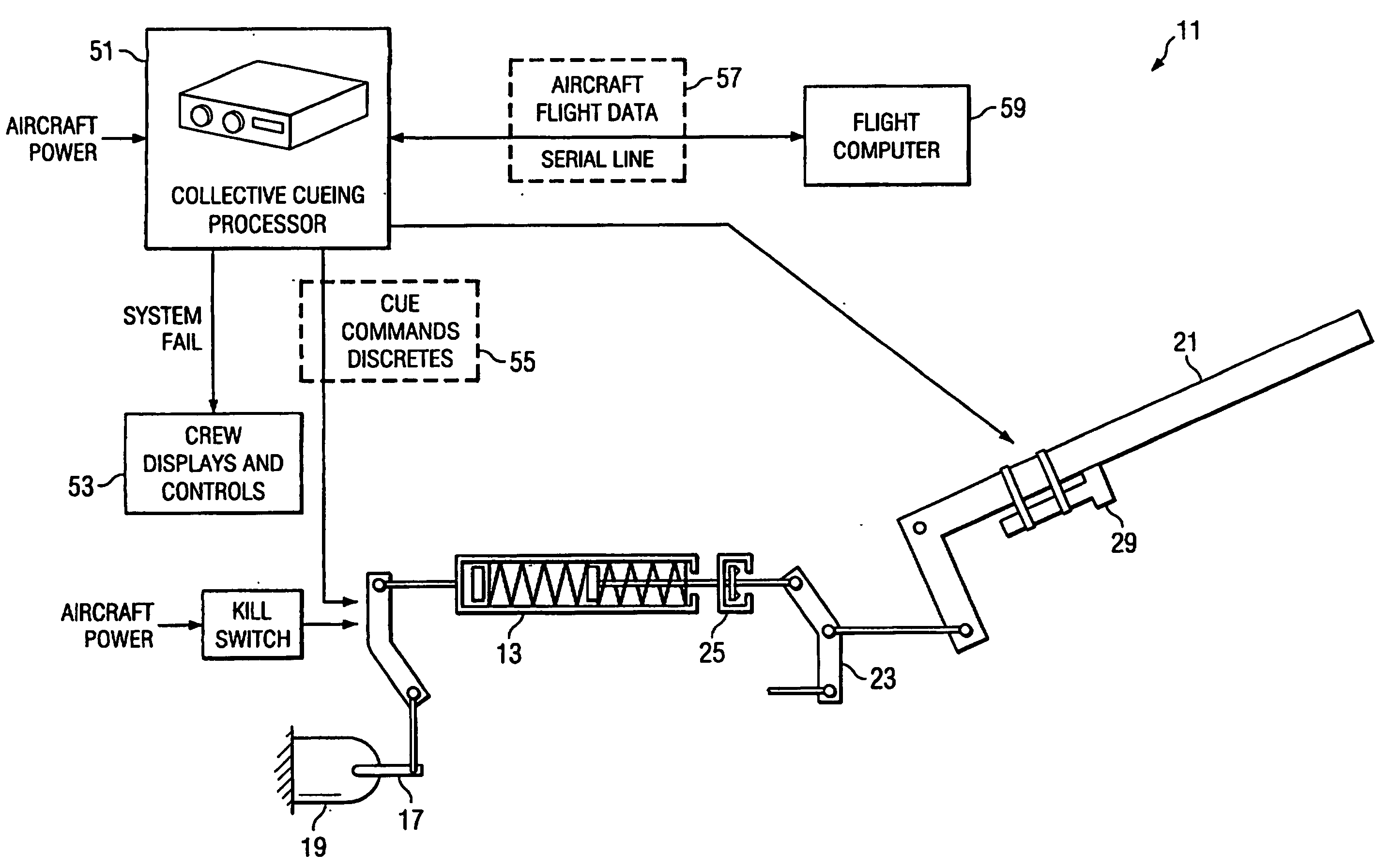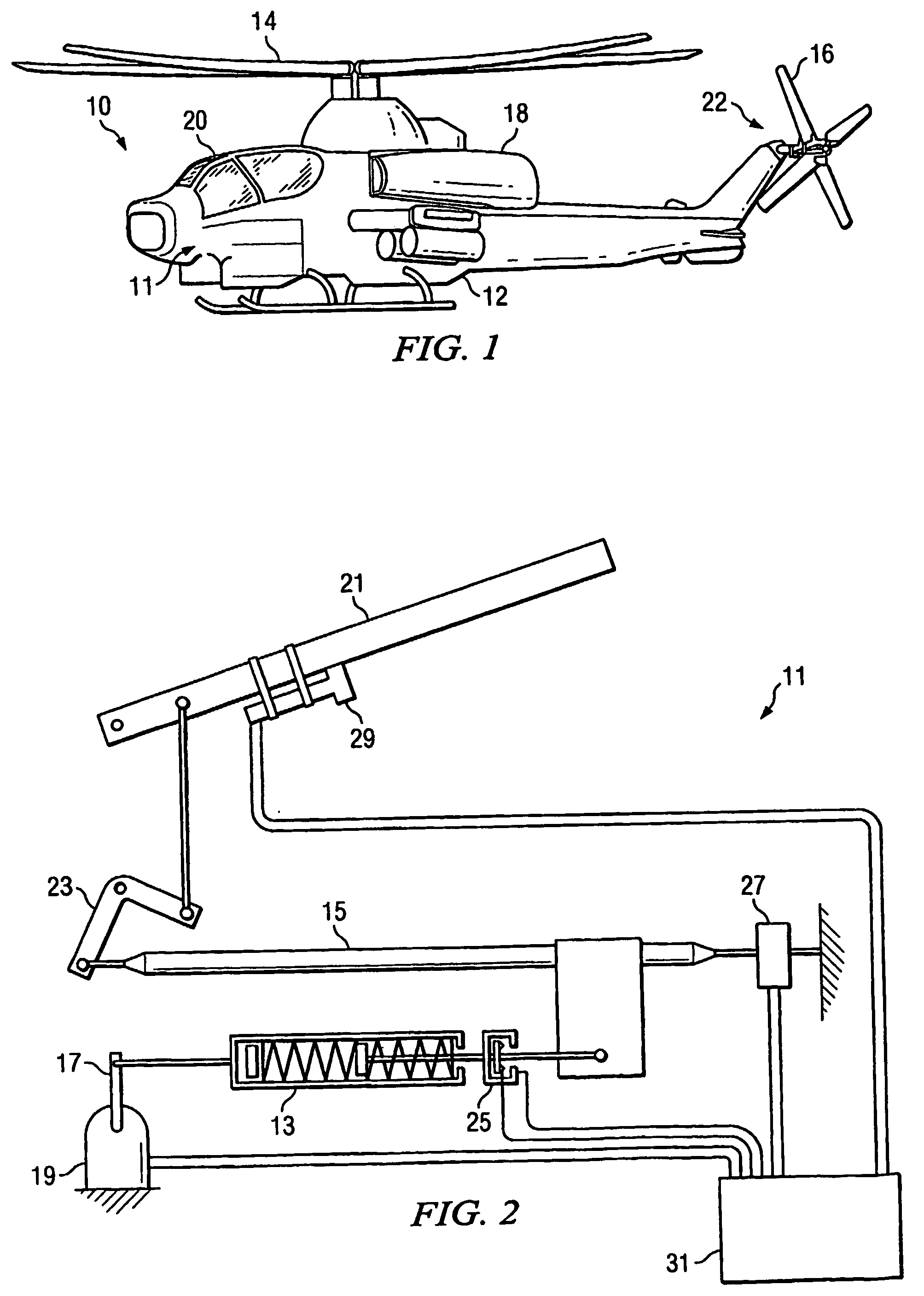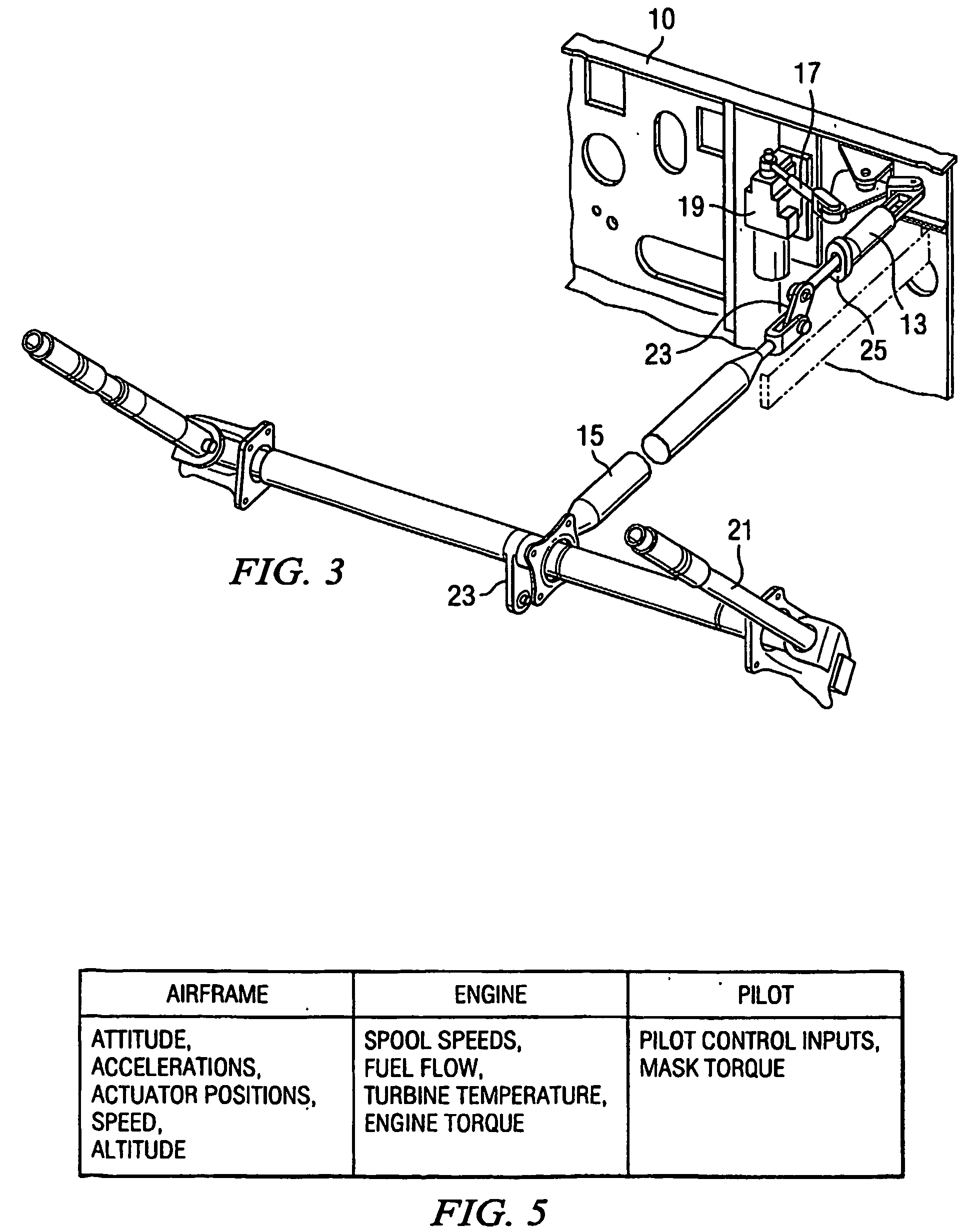Method and apparatus for tactile cueing of aircraft controls
a technology of aircraft control and tactile cue, which is applied in the direction of actuating personally, instruments, transportation and packaging, etc., can solve the problems of not really addressing the problem of keeping the pilot, significant degradation of aircraft performance and/or failure of vital aircraft components, and low reliability of the method, so as to reduce the cost of maintenance and repair, the effect of less complexity
- Summary
- Abstract
- Description
- Claims
- Application Information
AI Technical Summary
Benefits of technology
Problems solved by technology
Method used
Image
Examples
Embodiment Construction
[0029] The method and apparatus of the present invention uses tactile feedback to cue a pilot of impending exceedance of one or more operational parameters of an aircraft. The present invention enables the pilot to maintain “eyes-out-the-window” references during high-workload maneuvering tasks. Although the present invention is described with regard to a helicopter and HUMS parameters, it should be understood that the present invention is not limited to such applications, but may be used as an independent system on any rotorcraft or other aircraft, with or without a HUMS.
[0030] As with any helicopter limit cueing system, the cueing required for closed-loop torque management must be timely and unambiguous. Simply introducing a soft-stop at the static collective position where an exceedance is first expected to occur is insufficient due to the false relief cues that may result. For example, if the collective is lowered to relieve the force cue, the aircraft could still be in an exce...
PUM
 Login to View More
Login to View More Abstract
Description
Claims
Application Information
 Login to View More
Login to View More - R&D
- Intellectual Property
- Life Sciences
- Materials
- Tech Scout
- Unparalleled Data Quality
- Higher Quality Content
- 60% Fewer Hallucinations
Browse by: Latest US Patents, China's latest patents, Technical Efficacy Thesaurus, Application Domain, Technology Topic, Popular Technical Reports.
© 2025 PatSnap. All rights reserved.Legal|Privacy policy|Modern Slavery Act Transparency Statement|Sitemap|About US| Contact US: help@patsnap.com



